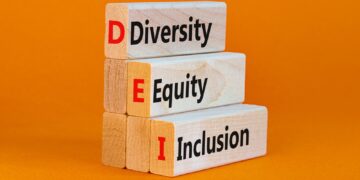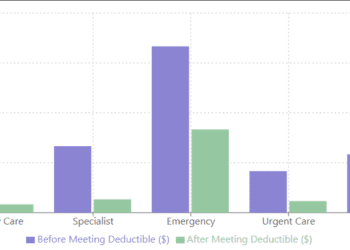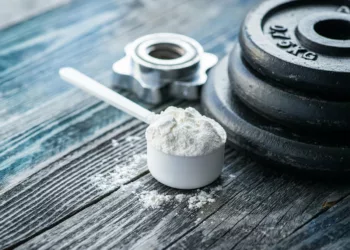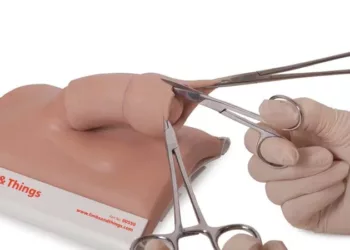Muscle imbalances can be a frustrating hurdle for anyone on a fitness journey. If you’re like me, you might have experienced the surprise of returning to the gym after a long break only to find one side of your body significantly weaker than the other. This post will delve deep into the world of muscle imbalances, exploring their causes, effects, and solutions, to help you get back on track and crush your fitness goals.
Understanding Muscle Imbalance
Muscle imbalance occurs when one muscle or group of muscles is stronger, larger, or more developed than its counterpart. This can lead to poor posture, reduced performance, and even injury. Identifying and addressing muscle imbalances is crucial for achieving balanced strength and a well-proportioned physique.
What Causes Muscle Imbalance?
Several factors can contribute to muscle imbalance, including:
- Handedness: Being right-handed or left-handed often means that one side of your body is used more frequently, leading to strength and size discrepancies.
- Old Injuries: Previous injuries can cause long-term muscle weakness or favoring one side over the other during recovery.
- Poor Posture: Bad posture can lead to uneven muscle development as certain muscles become overactive while others weaken.
- Everyday Activities: Daily habits, such as carrying bags or performing tasks with one hand, can exacerbate imbalances over time.
- Improper Training: Focusing too much on one side or using incorrect form can also contribute to muscle imbalance.
Recognizing Muscle Imbalance
Muscle imbalances can manifest in various ways, including:
- Visible Differences: One side of the body appears more developed or toned than the other.
- Strength Discrepancies: Significant differences in strength between the left and right sides during exercises.
- Movement Compensations: The body compensates for weakness on one side by shifting weight or altering movements.
- Pain and Discomfort: Imbalances can lead to discomfort, particularly in the back, neck, or joints.
The Role of Muscle Memory
Muscle memory is a powerful phenomenon that allows you to regain strength and skill more quickly after a break from training. This is because your muscles “remember” previous training adaptations. However, muscle memory does not correct imbalances. It’s essential to address imbalances specifically to ensure balanced development.
Personal Experience: Back to the Gym
After a year and a half off from the gym, I was pleasantly surprised by how much weight I could still lift, thanks to muscle memory. However, I quickly noticed a significant imbalance: my left side was much weaker than my right. This was particularly evident during dumbbell and cable exercises, where I could perform 12-15 reps with my right arm but only 6-8 with my left.
Dumbbells vs. Barbells: Which is Better?
Both dumbbells and barbells have their place in a balanced workout routine, but they serve different purposes when it comes to addressing muscle imbalances.
Dumbbells
Pros:
- Isolated Movements: Allow for unilateral exercises, targeting each side independently.
- Identifying Imbalances: Make it easier to spot and correct discrepancies in strength and muscle development.
- Range of Motion: Provide a greater range of motion, leading to better muscle activation.
Cons:
- Stability Requirements: Require more balance and coordination, which can be challenging for beginners.
Barbells
Pros:
- Heavier Lifts: Allow for heavier weights, promoting overall strength gains.
- Stability: Offer more stability, making them suitable for compound lifts like squats and deadlifts.
Cons:
- Hidden Imbalances: Can mask muscle imbalances as the stronger side compensates for the weaker side.
Strategies to Correct Muscle Imbalance
Correcting muscle imbalances requires a targeted approach. Here are some effective strategies:
1. Unilateral Exercises
Focus on exercises that target one side of the body at a time. This ensures that each side is worked independently, preventing the stronger side from compensating for the weaker side.
Examples:
- Dumbbell curls
- Single-leg deadlifts
- Single-arm rows
2. Equal Volume and Intensity
Ensure that both sides receive the same amount of work. If your left side is weaker, perform the same number of reps and sets as the right side, even if it means using lighter weights or taking more rest between sets.
3. Improve Mind-Muscle Connection
Concentrate on the muscle you are working on and ensure you are engaging it properly. This can be achieved through slower, controlled movements and focusing on the contraction.
4. Address Postural Issues
Improving posture can help correct muscle imbalances. Incorporate exercises that strengthen the core and back, and practice good posture throughout the day.
5. Use Cables and Resistance Bands
Cables and resistance bands can provide constant tension throughout the range of motion, helping to activate and strengthen muscles more effectively.
6. Consult a Professional
If muscle imbalances are severe or causing pain, consider consulting a certified trainer or physical therapist. They can provide personalized assessments and create a tailored program to address your specific needs.
Common Muscle Imbalance Scenarios
Let’s explore some common scenarios where muscle imbalances occur and how to address them.
Upper Body Imbalances
Scenario: Uneven Biceps Development
Solution:
- Unilateral Bicep Curls: Perform curls with each arm independently, ensuring equal reps and sets.
- Focus on Form: Ensure proper form to avoid compensating with other muscles.
- Use Resistance Bands: Incorporate resistance bands to provide constant tension and improve activation.
Scenario: One Shoulder Higher Than the Other
Solution:
- Single-Arm Shoulder Press: Strengthen each shoulder independently.
- Posture Exercises: Incorporate exercises like face pulls and scapular retractions to improve shoulder alignment.
- Stretching: Regularly stretch the shoulder muscles to improve flexibility and balance.
Lower Body Imbalances
Scenario: Uneven Leg Strength
Solution:
- Single-Leg Deadlifts: Target each leg individually to ensure balanced strength development.
- Step-Ups: Use a step or bench to perform step-ups, focusing on equal reps and sets for each leg.
- Leg Press: Use a single-leg leg press to isolate each leg.
Scenario: Hip Imbalance
Solution:
- Hip Thrusts: Perform single-leg hip thrusts to strengthen each side independently.
- Glute Bridges: Focus on glute bridges to improve hip alignment and strength.
- Stretching: Incorporate hip flexor and hamstring stretches to improve flexibility.
Tracking Progress
Monitoring your progress is essential for correcting muscle imbalances. Here are some methods to track improvements:
1. Strength Tests
Regularly test your strength on both sides using unilateral exercises. Track the weights, reps, and sets for each side to monitor progress.
2. Visual Assessments
Take progress photos to visually assess changes in muscle development and symmetry.
3. Mobility Tests
Assess your range of motion and flexibility on both sides. Improved mobility can indicate balanced muscle development.
4. Professional Assessments
Consider periodic assessments with a trainer or physical therapist to ensure you are on the right track.
Real-Life Example: Addressing Muscle Imbalance
Let’s look at a real-life example of how to address muscle imbalances effectively.
Case Study: John’s Journey
John, a right-handed office worker, noticed significant muscle imbalances after returning to the gym. His right side was noticeably stronger, and he experienced discomfort in his left shoulder.
Assessment
John’s trainer conducted an assessment and found:
- His right arm was 20% stronger than his left.
- He had poor posture, with rounded shoulders and a forward head.
- His left hip was weaker, affecting his balance during lower body exercises.
Plan
The trainer created a personalized plan for John:
- Unilateral Exercises: John performed unilateral exercises for his upper and lower body, focusing on equal reps and sets for each side.
- Posture Correction: He incorporated posture exercises, such as face pulls and scapular retractions, to improve shoulder alignment.
- Core Strengthening: John included core exercises like planks and bird-dogs to enhance stability and support proper posture.
- Mobility Work: Stretching routines targeted his shoulder and hip flexibility.
Progress
After three months, John saw significant improvements:
- His left arm strength increased by 15%, reducing the imbalance.
- His shoulder discomfort decreased as his posture improved.
- His hip strength and balance improved, allowing for better performance in lower body exercises.
Final Thoughts
Muscle imbalances are a common issue, but they can be effectively addressed with the right approach. By incorporating unilateral exercises, focusing on proper form, and addressing underlying issues like posture and flexibility, you can achieve balanced muscle development and reduce the risk of injury.
Remember, consistency is key. Track your progress, adjust your routine as needed, and consider seeking professional guidance if necessary. With dedication and the right strategies, you can overcome muscle imbalances and unlock your true potential in the gym.
References
For further reading and professional advice, consider the following resources:
- American Council on Exercise (ACE): Offers comprehensive guides and certifications for fitness professionals.
- National Academy of Sports Medicine (NASM): Provides educational resources and training programs.
- Physiopedia: A valuable resource for understanding muscle imbalances and corrective exercises.
Key Takeaways
- Identify the Imbalance: Understand the specific muscle groups that are imbalanced.
- Unilateral Training: Focus on exercises that isolate and target each side independently.
- Consistency: Regular, consistent training and assessment are crucial.
- Professional Guidance: Seek help from trainers or physical therapists if needed.
Practical Tips for Everyday Life
1. Daily Activities
- Alternate Sides: When carrying bags or performing tasks, try to alternate sides to avoid overusing one side.
- Ergonomic Setup: Ensure your workspace is ergonomically set up to prevent poor posture and muscle imbalances.
- Stretching: Incorporate daily stretching to maintain flexibility and balance.
2. Workout Routine Adjustments
- Warm-Up: Always warm up with dynamic stretches and light cardio to prepare your muscles.
- Cool Down: Incorporate a cool-down routine with static stretching to aid recovery and flexibility.
- Balanced Routine: Ensure your workout routine includes exercises for all major muscle groups.
Table: Sample Weekly Workout Plan
| Day | Exercise | Sets | Reps |
|---|---|---|---|
| Monday | Single-Arm Dumbbell Press | 4 | 10 |
| Single-Leg Deadlift | 4 | 10 | |
| Single-Arm Row | 4 | 12 | |
| Plank (each side) | 3 | 30s | |
| Tuesday | Rest / Light Stretching | – | – |
| Wednesday | Single-Leg Squat | 4 | 10 |
| Single-Arm Bicep Curl | 4 | 12 | |
| Single-Arm Shoulder Press | 4 | 10 | |
| Side Plank (each side) | 3 | 30s | |
| Thursday | Rest / Light Stretching | – | – |
| Friday | Single-Leg Press | 4 | 12 |
| Single-Arm Tricep Extension | 4 | 12 | |
| Single-Arm Lat Pulldown | 4 | 10 | |
| Russian Twist (each side) | 3 | 15 | |
| Saturday | Rest / Light Stretching | – | – |
| Sunday | Light Cardio / Full-Body Stretch | – | – |
Stay focused, stay balanced, and you’ll be well on your way to overcoming muscle imbalances and achieving your fitness goals.
For more content, check out Get Strong with Dumbbells: The Ultimate Guide to Building Muscle for Men.
Disclaimer: The information provided in this blog post is for educational and informational purposes only and should not be considered as medical or professional advice. Always consult with a qualified healthcare provider, certified trainer, or physical therapist before starting any new exercise program or making changes to your existing workout routine. The author and publisher are not responsible for any injury, loss, or damage that may result from following the advice or information presented in this blog post. Individual results may vary, and it is important to tailor exercise programs to your specific needs and abilities.
















































